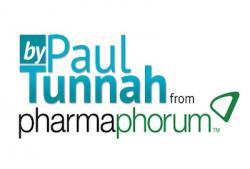
At one of the industry’s biggest commercial conferences last week, the patient was mentioned in almost every presentation, from junior marketers to C-level executives, and patients were present in significant numbers to also take part and quiz the industry representatives on their intentions.
While this all seems well-intentioned and genuine, it did flag one key problem for pharmaceutical companies in trying to engage with patients – they don’t speak the same language.
The world of pharmaceuticals, not unlike other sectors, is full of its own internal terminology – terms that we all use every day without thinking twice, but are utterly, utterly meaningless outside our own walls. For example, we have ‘multichannel marketing’, ‘key account management’, ‘closed-loop marketing’ and ‘salesforce effectiveness’ being bandied around as buzz words for more effective sales and marketing. But patients don’t want to be attacked via multiple channels, have closed-loop conversations or be managed more effectively – they want meaningful, genuine dialogue.
And it’s not just the patients that are confused by all this. Ask any doctor if they want to receive a ‘detail’ on a novel medication and they are likely to raise a slightly puzzled eyebrow. Or, as we’re speaking of details, ask them if the information you have about them in your ‘CRM’ system is up-to-date and see what reaction you get. CRM – is that some kind of new electronic prescribing system, clinical something-R, something-M perhaps?
It’s not just a problem on the commercial side of the industry either. The world of clinical trials and pharmacovigilance (drug safety to most people) is full of jargon. Within pharma, we talk about trial endpoints, whereas patients only know if they’re feeling better or not. And as for the language around unwanted side-effects from drugs, we talk about ‘adverse events’ in the same way that military commanders talk about ‘collateral damage’. To a patient, an adverse event could mean being doubled over being sick for hours on end, or worse, the end of their life. Suddenly, the term seems like a slight understatement.
While this creates challenges in direct engagement, it also hampers market research and social listening. If you want to find out what’s happening in diabetes, for example, you can’t just search for things like ‘diabetes’ and ‘diabetic retinopathy’, you need to search for things like ‘low blood sugar’, ‘losing vision’ and, if you really want to understand what patients are going through terms like ‘feeling scared’ and ‘depressed’ in association with diabetes.
Then we have popular areas such as medicines adherence – whether patients actually take their medicines – and personalised, or precision, medicine. On the former, patients certainly don’t like to ‘adhere’ to something they don’t understand and telling them their ‘compliance’ is not good enough sounds like something out of George Orwell’s 1984. On the latter, I was halfway through a round table debate once on personalised medicine when I realised that, for the patient in attendance, it had nothing to do with genetically-targeted therapies and everything to do with who treated them and how personal the service provided by the health system was.
And finally, we have the term ‘patient’ and the associated phrase of the moment, patient-centricity. Well here’s some news – most patients don’t refer to themselves as patients. They are people, living with a particular condition, with families, and friends, and jobs and lives to lead. And they just want to live long lives and have their condition impact their life as little as possible.
None of this is intended to be a whinge. Involving these people who are living with particular conditions more closely at every stage of pharmaceutical industry processes is absolutely vital – and they want to be involved for the most part too.
Just mind your language when you do so, or they might not understand a single word you say.

